

- 54. 10 Useful Pieces of Advice for Teaching with LEARNING WORLD #9 & 10
- 55. “Happy New Year!” “I don’t say that.”
- 53. Halloween 2019
- 52. READY Workbook Pg. 17
- 51. English-Uplift 1-Day Seminars
- 50. READY Workbook - vocabulary copying activity
- 49. 10 Useful Pieces of Advice for Teaching with LEARNING WORLD #8
- 48. 10 Useful Pieces of Advice for Teaching with LEARNING WORLD #7
- 47. 10 Useful Pieces of Advice for Teaching with LEARNING WORLD #6
- 46. 10 Useful Pieces of Advice for Teaching with LEARNING WORLD #5
- 45. 10 Useful Pieces of Advice for Teaching with LEARNING WORLD #4
- 44. 10 Useful Pieces of Advice for Teaching with LEARNING WORLD #3
- Kindergarten aged students
- Lower Elementary-school aged students
- Upper Elementary-school aged students
- Junior High and older students
- Others
6. A dog! Look! More than one… DOGS!
Page 7 of Learning World Book 3 reminds students of the plural “s” for animal names, as well as introduce new plural forms for animal names that are an exception to the rule: “mouse… mice”, “goose… geese” and “sheep… sheep”.
For a long time I hadn’t really thought about when in English we actually use the plural form for animals aside from as vocabulary for “I like …” However recently the SPRINGBOARD Level 5 book “Kangaroos” gave me some inspiration.
The story inside the book gives some basic facts about kangaroos:
“Kangaroos have a pouch.”
“Kangaroos have a strong tail.”
“Kangaroos can hop.”
“Kangaroos eat grass.”
Using this book as a base, I wondered if my class of 5th graders (minimum of 3 years experience and currently on LW Bk3) would enjoy brainstorming and writing some basic facts about the animals on page 7.
In class, after reading “Kangaroos” together, they decided that:
“Dogs can run”, “Dogs can jump”, “Dogs like balls” and “Dogs like running”.
With class time coming to a close, I asked them to complete “Cats”, “Pigs”, “Mice” and “Geese” for homework. When they presented me with their completed homework the following week, I was very surprised at their ideas:
“Cats eat nori” is this student’s personal observation of his family pet.
His idea “Sheep don’t like dogs” is inspired by another SPRINGBOARD story “Pet Dogs and Working Dogs” (Level 6).
The source of his idea “Mice eat grass” is unknown, but it’s an idea he insists is factual.
This student’s English has in this photo not yet been corrected, but her idea “Geese have teeth” is based on a search on the Internet. I wasn’t aware that geese had teeth!
Expanding a textbook idea to the point where students’ originality can surprise you is actually quite nice, isn’t it?












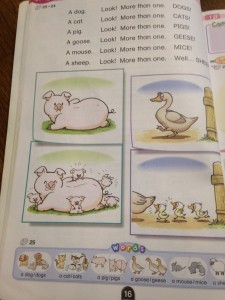
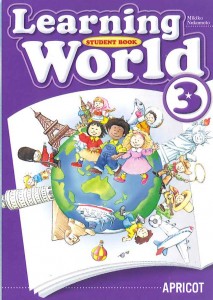
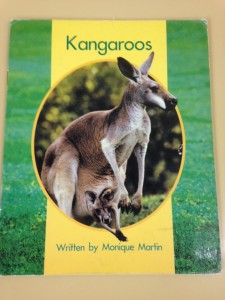
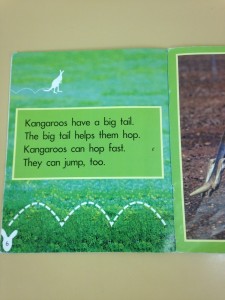
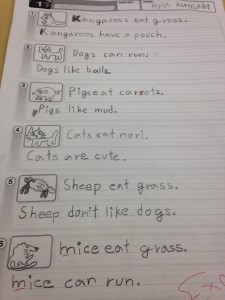 ←Click to enlarge
←Click to enlarge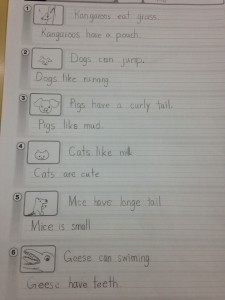 ←Click to enlarge
←Click to enlarge







